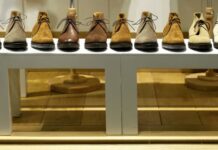According to a study conducted by the Hearing Loss Association of America, an estimate of 48 million Americans are experiencing some degree of hearing loss. For most, its effects can be damaging, both physically and mentally.
Thankfully, with technological advancement, there is now a variety of hearing aid options that can help address this health concern. One of the most notable brands in the market nowadays is Oticon hearing aids. Read on and find out if this model is the right one for you.
A Brief Background
Oticon is the brainchild of Hans Demant, a Danish gentleman whose wife suffered from hearing loss. His passion for improving his wife’s condition and others like her led him to import hearing devices to Denmark. After his death in 1910, his son William took over and continued his legacy.
In 1940, William was able to manufacture hearing aid components in Denmark. Since then, Oticon has continued to develop different models meant to improve not just its user’s hearing, but also their overall quality of life.
Different Kinds of Oticon Hearing Aids
Finding the right Oticon device involves a lot of trial and error. While a hearing specialist will assist you in this aspect, it can also be helpful to do your own research. You can start by learning more about the different forms of hearing aids Oticon has to offer.
Receiver-In-the-Ear (RITE)
RITE hearing aids are designed with a behind-the-ear casing connected to a receiver inside the ear. Their significantly smaller structure allows for a more discreet and comfortable fit. This type of hearing aid is recommended for people with mild to severe cases of hearing loss.
Invisible-In-the-Canal (IIC)
IIC hearing aids are inserted deep inside the ear canal. Because of this, professional help is needed to insert and remove the device. This style is suitable for people who engage in moderate to strenuous activities. IIC hearing aids, however, do not offer the same power levels that larger models have. This makes them more suitable for individuals with mild hearing loss.
Completely-In-the-Canal (CIC)
As its name suggests, CIC hearing aids are placed completely inside the ear canal. This makes them the most discreet among all the types. Additionally, the way the device is placed allows for little to no feedback, resulting in a more natural experience. Like the IIC type, they are also suitable for individuals who lead an active lifestyle.
In-the-Ear (ITE)
ITE hearing aids are worn in the outer opening of the ears. They work best for individuals suffering from mild to severe cases of hearing loss. Since they’re not placed behind the ear, they are suitable for people who wear glasses. Moreover, their larger size enables them to accommodate features such as volume and memory controls.
Proper Care and Maintenance
Oticon hearing aids can be considered as huge investments. If you want to fully maximize the benefits of your device, proper care and maintenance must be observed. Here are some simple guidelines that you can follow:
Avoid Submerging Them in Water
Oticon devices are water-resistant and can take a little bit of sweat and light rain. However, these are not meant to be fully submerged in water. Be sure to take them out if you’re going swimming, taking a bath, or anything along those lines.
Handle Them With Care
When not in use, be sure to store your Oticon device in the case it comes with or in a drying kit. It is also important to wash your hands before touching it. This will prevent dirt and oil from penetrating your device. As an added precaution, remove them over a soft surface like a bed so that they’re cushioned in case of an accidental fall.
Avoid Direct Contact With Chemicals
Chemicals found in products like hairspray, lotion, sunscreen, and so on can tamper with your Oticon device’s performance. With that, be sure to remove it and allow the products to dry before wearing it again. In cases of exposure, simply wipe them off with a clean, dry cloth.
Clean Your Device Regularly
Regular cleaning is a must if you want to ensure the quality performance of your device. There are special tools like the MultiTool brush specifically designed for this purpose. On top of that, you must also change the filters when necessary to avoid earwax and dirt buildup.
Bottom Line
The type of Oticon hearing aid you choose will vary depending on your lifestyle and personal preference. If you are interested in purchasing one, do not hesitate to seek help from a hearing specialist. Doing so will enable you to get the right Oticon model that will best suit your needs.



















